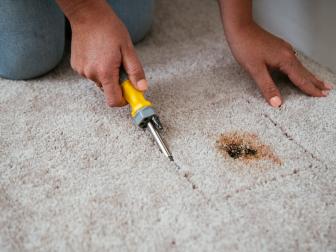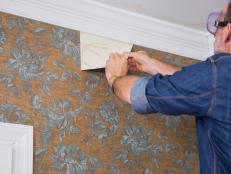How to Remove Wall-to-Wall Carpet
Removing old yucky carpeting can be one of the most satisfying DIY jobs. Plus, doing it yourself will save money. You’ll need just a few basic tools and less than half a day to complete the job.
Rid your home of all traces of dated wall-to-wall carpet following these simple steps.
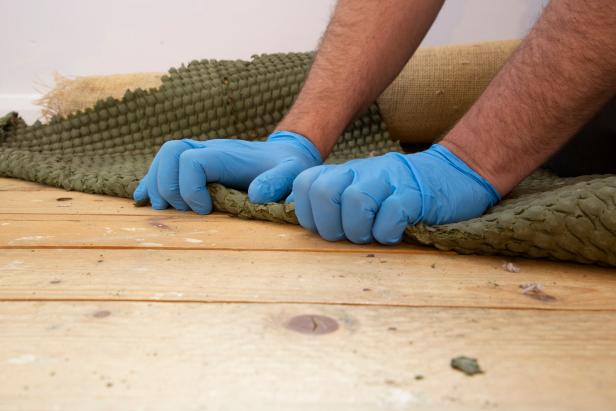
rigsbyphoto
Tools and Materials
- pliers
- dust mask
- gloves
- kneepads
- utility knife or carpet blade
- mini crowbar
- measuring tape
- hammer
- shop vacuum
Make a Plan for Disposal or Recycling
Before you begin pulling up your old carpet, figure out how you're going to dispose of it. Please think twice about just throwing it to the curb. Carpet can be recycled! Carpetrecovery.org lists carpet collection sites across the country. If there is not one in your area, call a carpet store in your area and ask if they know where you can bring your old carpeting to be recycled. The old carpeting is often recycled to make new carpet padding.
If recycling isn't viable, consider various ways you can upcycle at least some of the old carpeting. If you have a section of the carpet that is still good, you can have the edges bound and turn it into an area rug or throw rugs for another room or an unfinished basement. Or cut the carpeting up to make all sorts of projects like a cat scratching post, car mats or a doghouse liner. Carpet remnants can be placed under appliances like a washer or dryer to quiet their vibration.
Prep for Safety
A lot of dust and fiber particles may come loose when you pull up the carpeting, so wear a dust mask and goggles. A sturdy pair of gloves is also recommended because you'll likely come in contact with staples and sharp tiny black nails known as carpet tacks.
Remove Shoe Molding
If the room has shoe molding — also called quarter-round because its shape is one-quarter of a circle — you'll have to remove it first before pulling up the carpet. You may be able to reinstall the shoe molding if you can pull it up in large pieces and are able to extract all the nails and repaint it.
If the room has just baseboard molding, you probably won't have to remove that because the old carpeting can probably be pulled out from underneath it. Your new flooring, whether it's carpet, hardwood or tile, may be able to be installed without removing the baseboard — it will depend on the thickness of the new floor.
Start in a Corner With a Sharp Blade
Whether you use a utility knife or a special carpet knife, make sure you have a sharp blade; it’ll make the job quicker and easier. Plan on removing the carpeting first, then go back and remove the padding. If you can locate a seam in the carpet, consider yourself lucky, it makes a good starting point. If you can't find a seam, use your blade to cut into the carpet. Start in a corner and use a pair of pliers to pull the carpeting off the tack strips. You can pull with your hands if the carpeting comes up easily, but be careful of the tack strips, they are very sharp.
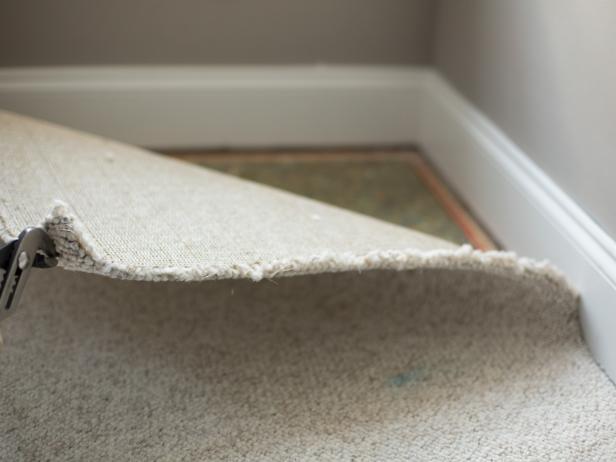
Cut Carpeting Into Strips
It is easier to carry if you cut the carpet into 4-foot-wide strips. Use a measuring tape to determine the proper width (Image 1) then cut it to size (Image 2).
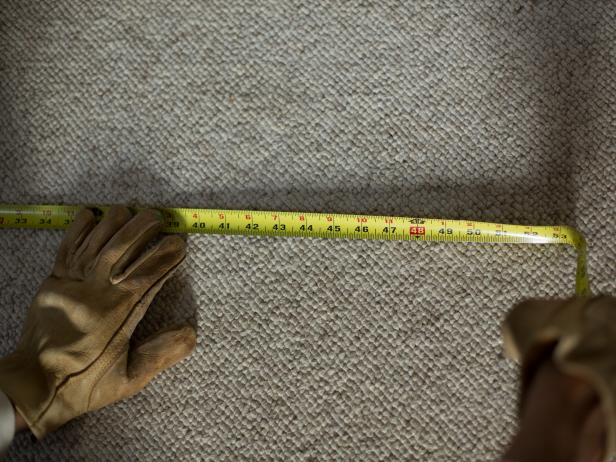
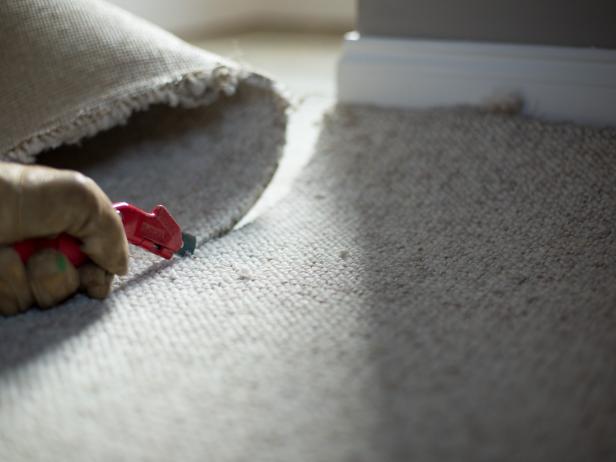
Pull Back and Roll Up Strips
Pull up each 4-foot strip, loosening it from the remaining carpet (Image 1). Roll up the strips then carry them out of the space (Image 2).
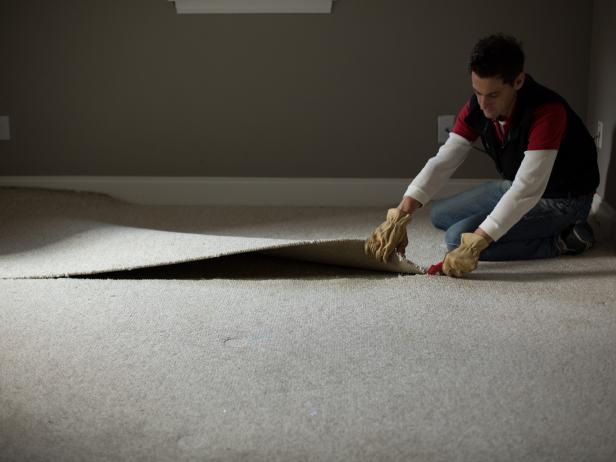

Remove Padding
Once all of the carpeting has been removed, remove the padding. If the subfloor under the padding is plywood, the padding was likely stapled down. It'll be time-consuming, but it is best to remove all of the stapes. If the subfloor is concrete, the padding may have been glued down. You may have to use a glue scraper tool to remove the glue from the concrete. The type of new floor you're installing will likely determine how much effort you need to put into removing the padding's fastener.


Remove Tack Strips if Necessary
If you are installing new carpeting, you may be able to reuse the tack strips if they're in good shape. If you need to remove the tack strips, use a mini crowbar and a hammer to the job done. Pry the crowbar under tack strips, then give it a few taps with a hammer until the tack strip is knocked loose from the subfloor (Image 1). Then use the crowbar to continue to pry the strips off the subfloor (Image 2). Finally, use a shop vacuum to thoroughly clean the subfloor.
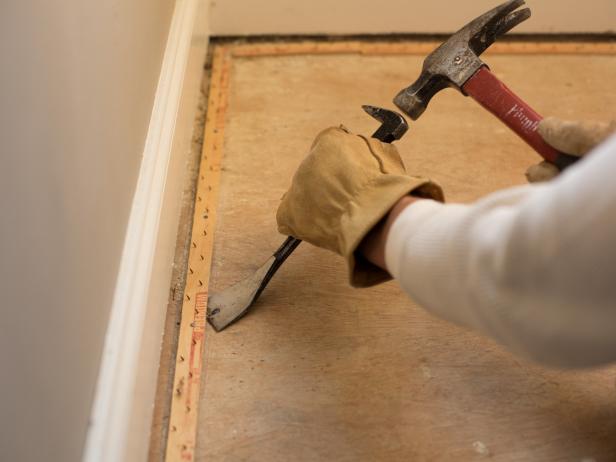
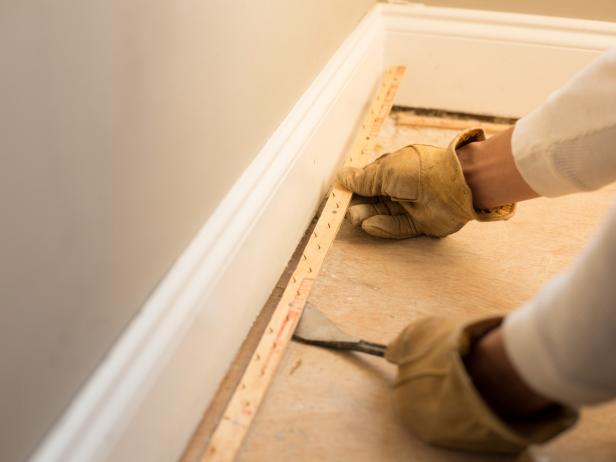
How to Repair and Patch Damaged Carpet
Got a stain in your carpeting that can’t be removed by cleaning? Learn how to cut away the damaged area and install a seamless patch.







